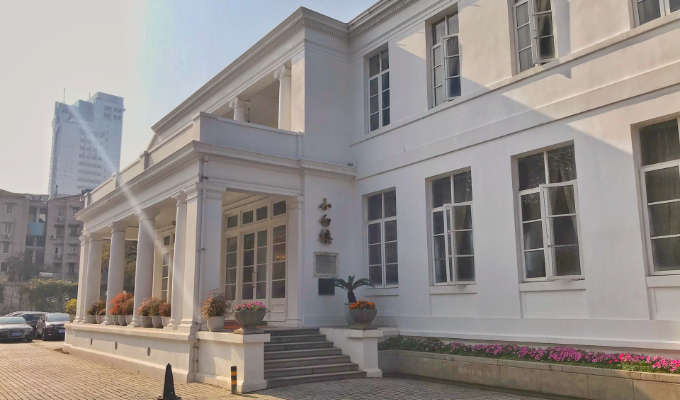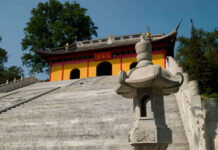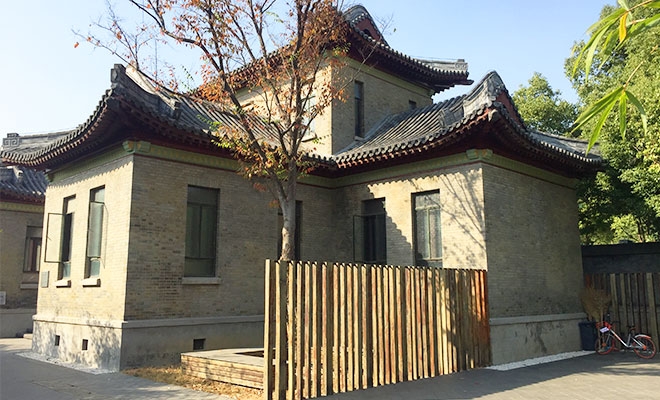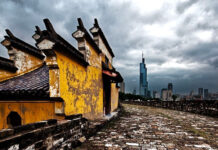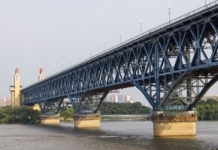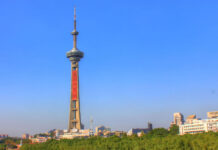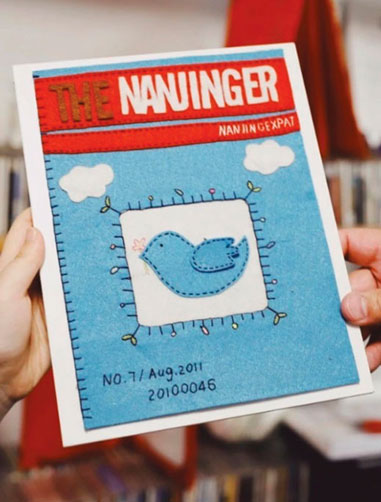It is so hard to imagine China’s flapping days of luxury; Nanjing’s pockets of glitz and glamour, before it all took a turn for the worse, only to revel in its renaissance a century later.
All too often, modern Chinese history is encapsulated in episodes such as the Cultural Revolution and the War of Resistance against Japan. If we want to remember a world which has been forgotten and erased, along with its bourgeois ways, we need to dig further.
Once upon a time, Chinese high society swung to gramophones, sipped Champagne and enjoyed fine dining. Let us for a moment contemplate what it must have been like for those who came long before us; the diplomats and their families, many of whom brought their Victorian manner to mainland China.
The Nanjinger has this month explored the very buildings left standing where these people lived and worked; the city’s former embassies. As capital of China during what is now known as the Republican Era (1912-1949), Nanjing was home to a multitude of embassies, their dignitaries and staff serving within, many of which built in a European manner, mirroring their country’s architectural preferences.
Much of Nanjing today simply did not exist back then, with the exception of locations such as Xinjiekou and Fuzimiao. Sometimes referred to nowadays as the old embassy district, back then, Gulou was literally the new kid on the block, home to the most important of government bodies, buildings, embassies and people of note, as Nanjing settled into its role as capital of the world’s newest and most populous nation.
Among Nanjing’s former official residences of foreign ambassadors, none can compare to the extravagance and magnificence of that which was the British Embassy. Located at 185 Huju Bei Lu, it was built in 1919 and rented by the British Embassy during the Republican Era from 1924 to 1950, after the capital was moved to Beijing. In 1953, it began to be used by the Jiangsu Provincial People’s Government.
This Victorian mansion, that takes up 1,765.90 square metres, is now a restaurant, used in the past as a hospital, as well as a hotel. Elegant, luxurious and very British, the building is one of the only former embassies (perhaps beside that of the Dutch) to have kept its original structure and feel to this day.
As one approaches the mansion, it becomes easy to imagine life as an expat in the 1920s. Any trace of China melts away as one ascends the white stairs of the building. Upon opening its wooden doors and standing in the splendid hallway, decked with red carpets, sparkling chandeliers and elegant paintings, one is transported into another time.

As I stood there with my eyes closed, I could smell ageing wood and cigarette-stained furniture; hear the whistle of of an upbeat trumpet coming from the gramophone in the corner of the hall. It was easy to imagine staff buzzing all around me, while passing by as I walked up the staircase were men in penguin tuxedos with thick moustaches; they strolled past with their walking sticks and cigars, discussing diplomatic affairs in an upper-class demeanour.
Exploring the many vestibules on the second floor, I could feel the women of the house bustle from room to room, their lace dresses trailing behind them as they gave instructions to their Chinese house maids. The sun-kissed south wing consumed my imagination the most; these were the very rooms where many an important African, Middle Eastern and European diplomat sat sipping tea, where bridge was played and national affairs debated.

When the Kuomintang government declared Nanjing capital of the Republic of China, the government’s “central plan” was enacted. Included therein was the building (and renting) of embassies, villas and compounds. Where Ninghai Lu meets Jiangsu Lu and its surroundings is the recently-renovated Yihe Mansions compound, a century ago home to many other embassies.
These days one can purchase a ticket and take a look around the mansions, which now serve as museums and exhibition halls.
Gazing at the former Mexican Embassy at 15 Tianzhu Lu, it is more difficult to imagine this was once a place that was filled with carpeted floors, the clinking of glasses and the China-Mexico friendship treaty that was once exchanged. Similarly, many such embassies have yet to receive government-subsidised refurbishing, but that is not to say the authorities have not been working hard at restoring them.
One-by-one, many a former embassy in Nanjing is slowly being returned to its former glory, to once again stand bright and tall, representing a period in Nanjing’s history that is no longer forgotten. If anything, with the emergence of speakeasy bars (see Our Space on p28), vintage styles of clothing and an obsession with the music and dance of a hundred years ago, the youth of Nanjing is embracing the city’s Republican ways once more.
One excellent example thereof is the former French Embassy, recently restored to now be the most beautiful structure on Gaoyunling Alley. Standing as a protected monument, its wide walkway is flanked by eight Roman columns; just by looking through the cast iron gates, the feeling of how Nanjing once moved is easy to evoke.

Most embassies, however, such as the former Turkish and Australian sites, took the form of rather ordinary-looking villas; European in style, but nothing to write home about. The former American Embassy, located at 33 Xikang Lu, is now a provincial government agency, much like other embassies, while some have also been refitted as museums or restaurants.
To know that people roamed these embassies completely unbeknownst as to what was headed their way in a few short years is a decidedly odd feeling. The starched uniforms, together with fine food and wine in the lap of European luxury were all there to be enjoyed, as they indeed were, albeit for a somewhat brief period.
Nonetheless, to stand inside these buildings of Nanjing’s bourgeois past is a gift, representative of a very significant part of this city and country’s past. No matter the political climate of the day, the former embassies tell an epic tale of survival, struggle and beauty; brick and mortar metaphors for a resilient people with an insatiable desire for peace and prosperity.


